Top Artificial Intelligence Trends to be on High Demand in 2019
The year 2018 witnessed a dramatic rise in artificial Intelligence platforms and applications. Along with the software and internet industry, the technology took other verticals like healthcare, legal, manufacturing, automobile and agriculture by storm. Earlier, Artificial I was restricted to science fiction movies, but today, we can see technology has caught up with imagination. A dream come true; AI has become a reality. Every single person we encounter is accustomed to using AI in his or her everyday lives. A team of experts reported the rise of AI to be an industrial revolution at par with the three industrial revolutions of steam, oil and electricity, and computers.
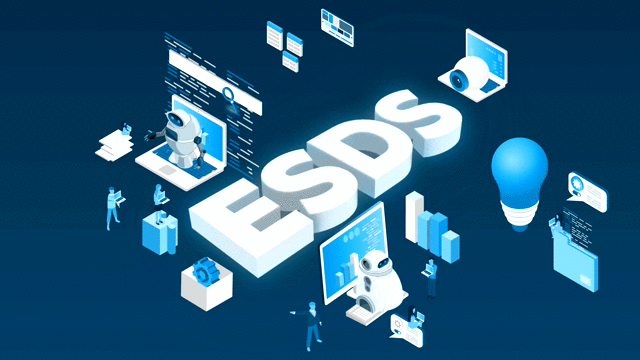
Soon we will find AI revolution to be the gateway transforming cities into “informational infrastructure” nestled in the broader “digital revolution”. A recent report says 23% of businesses have incorporated the technology into its processes. Market research says the global artificial intelligence software market is expected to rise to 118.6 billion by 2025.
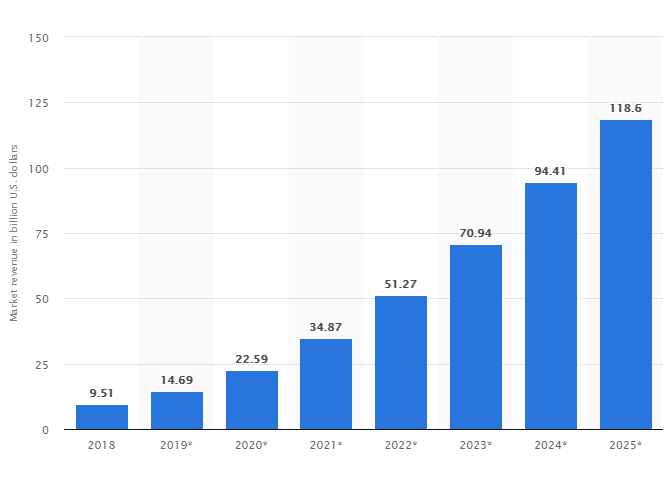
According to a recent survey, the significant improvements and game-changers in AI are just a few months away. The AI trends that are likely to unfold in 2019 will undoubtedly be the driving forces in both business and society.
Let us see the AI trends that will make a dent in 2019.
1. Chatbots
The skill to process natural language is broadly considered a hallmark of intelligence. The advancements in artificial intelligence led to chatbot replacing traditional conversational service. Since the chatbot are trained based on past information, organizations use them to maintain reports. The technology utilizes these logs to figure out client queries. With a blend of history and machine learning tools, the clients are replied with the appropriate answer.
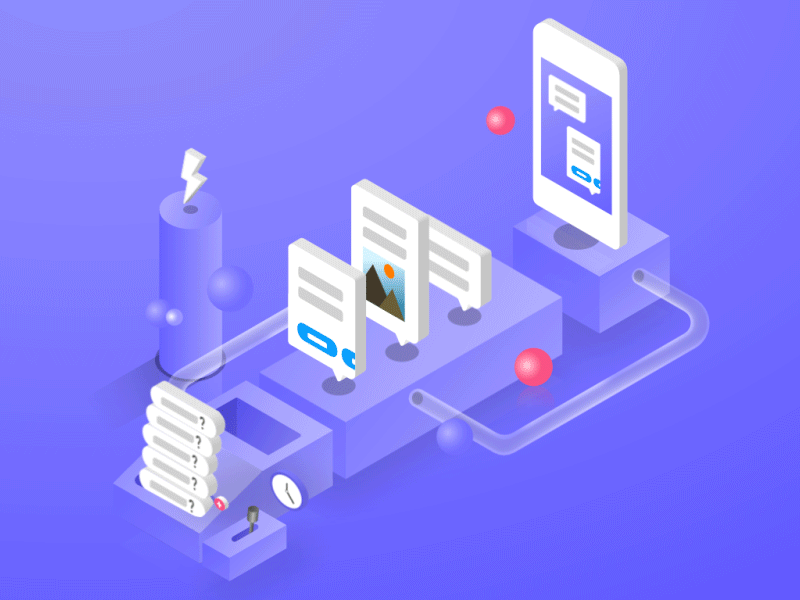
Chatbot Architecture:
The chatbots are based on three classification models:
I. Pattern Matching: The technology uses artificial intelligence markup language to group the text and produce an appropriate response. The chatbots try to relate the query with pattern combinations present in the database.
II. Natural Language Understanding (NLU): NLU algorithm analyses the human query independent of past conversations. To differentiate the earlier conversations, its state is stored. It may be restaurants, office, etc. These parameters are much more helpful to relate the query with the context without having to worry about the chat history.
III. Natural Language Processing: NLP converts the text to structured data. It uses a combination of the below-given steps:
• Tokenization: The sentences or series of words are separated into tokens or pieces that are linguistically representative.
• Sentiment Analysis: NLP studies the human experience to provide a satisfying reply to the human.
• Normalization: The text is processed to detect the typographical errors and spelling mistakes that alter the meaning of user query.
• Named Entity Recognition: The program model searches for specific words like name, address, etc. relating to the query.
• Dependency Parsing: It looks for subjects, verbs, common phrases, nouns and objects in the user’s text to find out the phrases related to the user’s request.
The AI-driven chatbots can handle complex human interactions with ease. Businesses have adopted this AI enabled chatbot to deliver a personalized experience to the clients. The chatbot is designed to handle human query and guide the clients through the complex procedures with ease. A survey from 2019, says 11% of Indians are obsessed with AI-driven Chatbot.
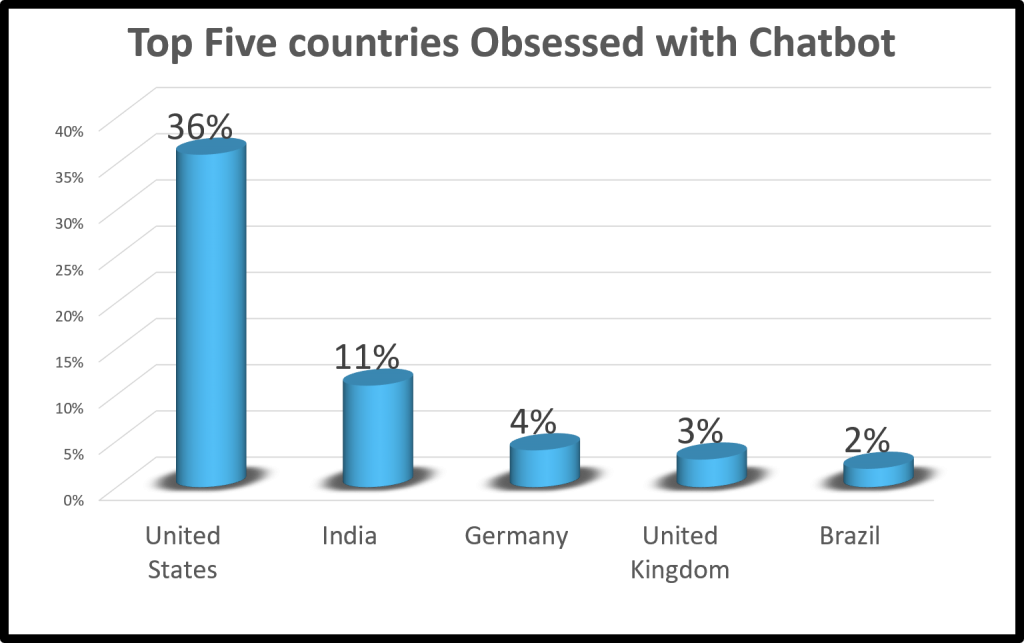
Top Industries leveraging Chatbot:
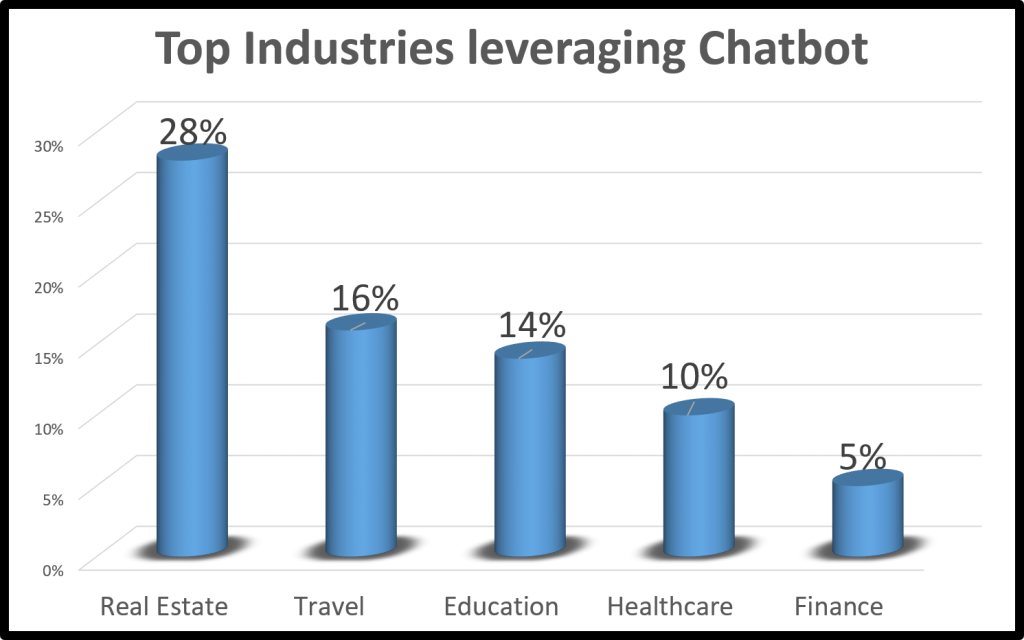
2. Virtual Assistants
The digital landscape is currently experiencing a trend where virtual assistance is being acknowledged since the last decade. The recent years witnessed a phenomenal growth in the acceptance of virtual assistants like Siri, Alexa, Google assistant, and so on. The global market scenario states the growing need for multitasking ability for organizational success has led to the acceptance of VA. It is estimated that the number of people using virtual assistants across the globe is projected to reach 1.8 billion by 2021. These virtual assistants present on most of the smartphones understand the voice commands from the user and execute the task as requested. They are a combination of chips, microphones, and software that recognize the voice query from you and respond with the voice you select.

How can businesses use Virtual Assistants?
Virtual assistants have found a new home in a business environment. A survey says organizations are using virtual assistants to improve efficiency. Here are the uses of VA in businesses.
I. Automated meeting coordination: If a virtual assistant can access the organizational calendar of all the employees and clients, then it can book the meeting slots depending on everyone’s schedule. A few virtual assistants notify external attendees in case of the meeting being cancelled.
II. Connecting with customers: Virtual assistants enable organizations to interact directly with the customers. The localized actions help the companies to customize the content and experience depending on location, language and region. Also, they help to develop compatible apps that can gather customer data to improve sales and outreach.
III. Managing infrastructure: The voice assistants are capable of monitoring backend computing services of an organization. They can monitor the resources available, active security alarms and the tasks performed.
IV. Enabling the smart office: Voice assistants have made the concept of intelligent offices much more manageable. The digital assistants can control the amenities like lights, projectors, etc. in the room, depending on its usability. They also generate alerts in case of unavailability of resources.
Timeline of the mainstream voice assistants:
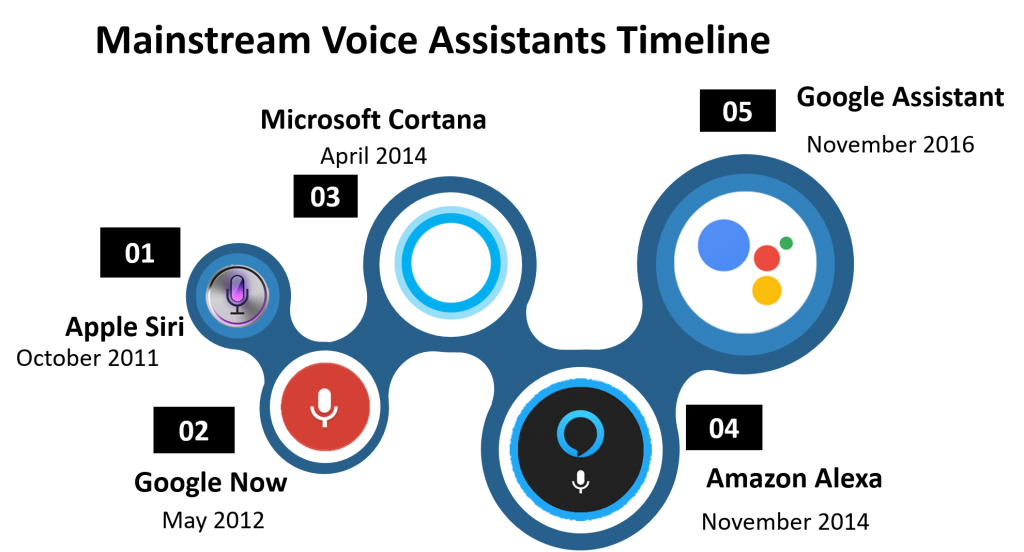
Virtual assistants have made human life much more comfortable. We’ve started relying on voice assistants to play radio, to receive weather forecast, read emails, phone calls, to receive traffic news, etc.
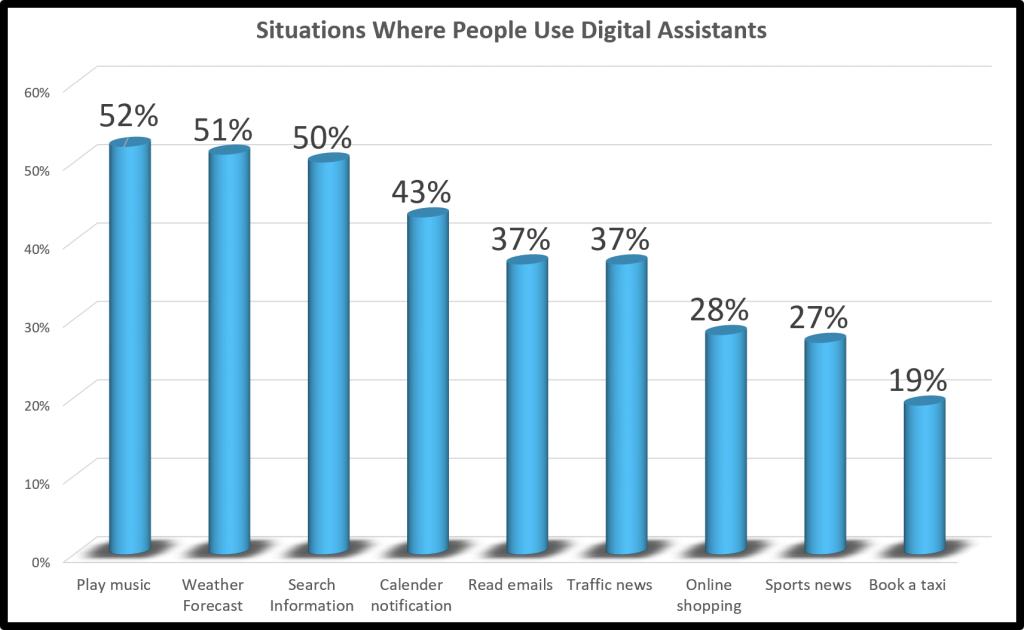
Market research says Siri is the most commonly used virtual voice assistant, followed by Google now, Cortana, Amazon echo, Blackberry assistant and Samsung S Voice.
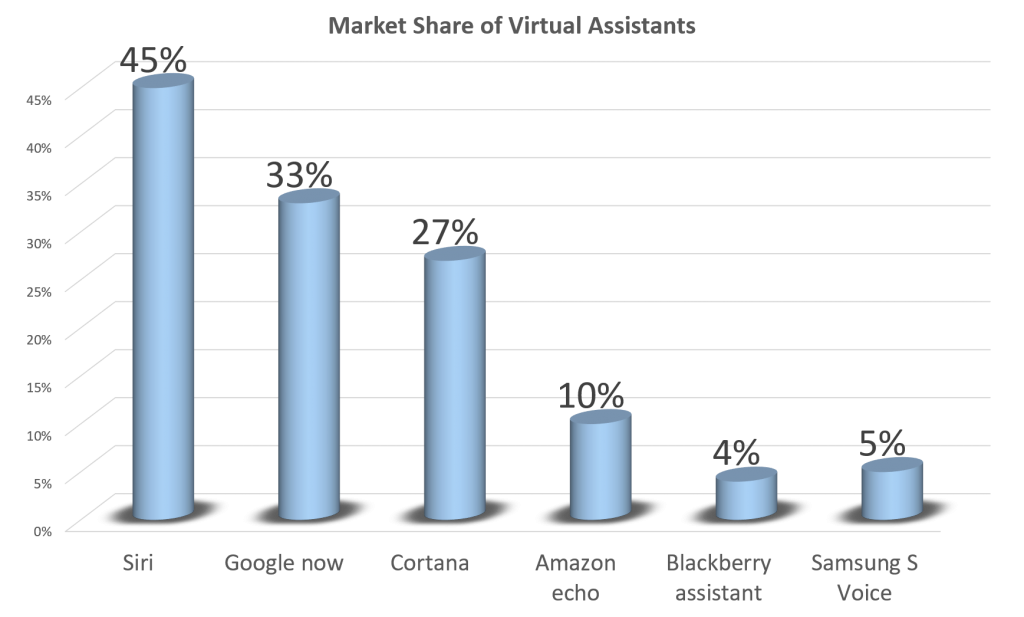
3. Facial Recognition
The advances in digital sensors, processing power, data analytics and neural networks have given rise to stunning accuracy in the FR system. Face recognition system uses an LPBH algorithm to detect the human face correlating the contours of the eyes, nose, lips, ears and chin. Face recognition algorithm can be set in a way that they can even gauge emotions.
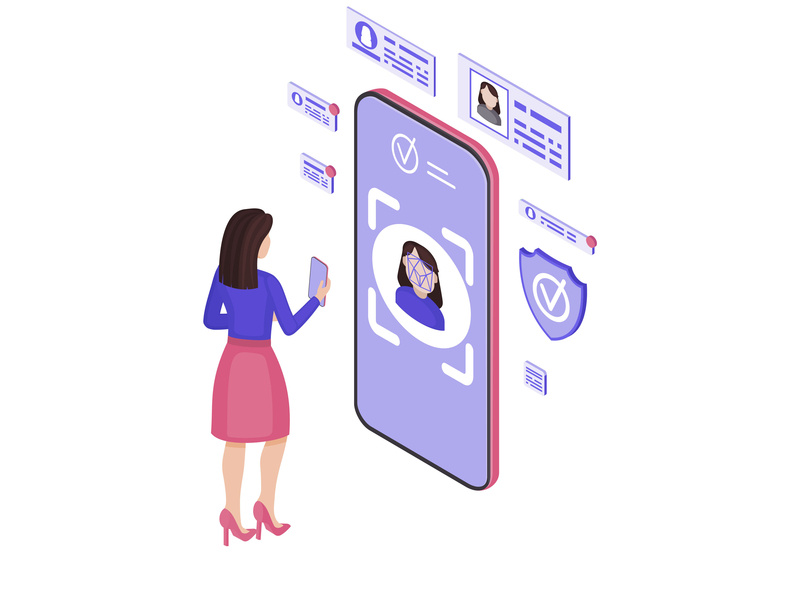
Face recognition system operates in two modes:
I. Verification or authentication of a facial image: In this mode, there is a comparison between input facial image and the image required for authentication. It is generally one to one correlation.
II. Identification or facial recognition: The input facial image is compared with all the images in the dataset to find the match. The comparison is 1xN.
Steps involved in LPBH algorithm:
I. Parameters: 4 parameters are used in the algorithm:
• Radius: Radius enables to build the circular local binary pattern. The radius is represented around the central pixel and is generally set to 1.
• Neighbours: The neighbours are the number of sample points used to build the circular local binary pattern. The number of sample points is directly proportional to computational cost meaning; the more the sample points higher is the cost. Generally, it is set to 8.
• Grid X: It represents the number of cells in the horizontal direction. The more the cells, the finer is the grid and higher is the dimensionality of the resulting feature vector. Generally set to 8.
• Grid Y: It represents the number of cells in the vertical direction. The increasing number of cells define the more beautiful grid and higher dimensionality of the resulting feature vector. Usually, it is set to 8.
II. Training the Algorithm: To prepare the algorithm, a dataset is required, which contains the facial images of the people that need to be recognized. An ID (name or number of the person) is set. Image of the same person has the same ID. The training set is constructed.
III. Applying the LBP operation: Initial step is the computational step involving the need to create an intermediate image, which can better describe the original image. The image highlights the facial characteristics. The algorithm uses the sliding window concept on the predefined parameters radius and neighbours.
IV. Extracting the Histograms: Post LBP operation, Grid X and Grid Y parameters are used to divide the image into multiple grids.
After dividing the image into multiple grids, we can extract the histogram as follows:
• The greyscale image we have contains only 256 positions in each histogram. These positions represent the occurrence of each pixel intensity.
• Each histogram is concatenated to create a new and more significant histogram. The final histogram will represent characteristics of the original image.
V. Performing face recognition: The algorithm is already trained; every created histogram is used to represent each image in the training data set. For every input image, the steps are repeated. The best match is found by comparing the two histograms. The closest set is returned as a result.
4. AI-enabled chips
The increasing acceptance of deep learning and machine learning models have demanded the need to use powerful chips for crunching enormous numbers. The technological advancements in 2019 have pushed the AI chips to emerge victorious than before. The year 2019 will see the rise of specialized chips, manufactured to perform complicated mathematical computations and speed up the execution of AI-enabled applications. These AI-enabled chips will speed up tasks like object detection and facial recognition. AI-enabled chips on smartphones offer high data privacy and security.
These chips are optimized for specific use cases and scenarios regarding computer vision, natural language processing and speech recognition. The industries in the next generation will depend on these chips to deliver intelligence to end-users.
Conclusion In 2019, the AI trends are sure to make a big splash in the market. The advancements in AI are not going to decline anytime soon. AI is not only accepted in the software and internet industry but has gain popularity in healthcare, automobile, retail sector etc. The AI, as mentioned above trends, will ease business operations and human lives, generating the need to employ more workers that are skilful. A brighter future awaits for everyone, where humans are relieved of menial work using AI capabilities.
- Digital Transformation Paves the Way for the Finance Industry - July 29, 2021
- Embracing Change – How Banks are Adopting Digital Innovation - April 19, 2021
- How the Indian Education Sector is Embracing Cloud Computing - November 13, 2020
